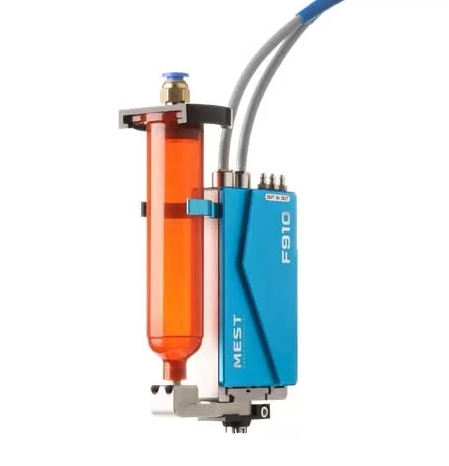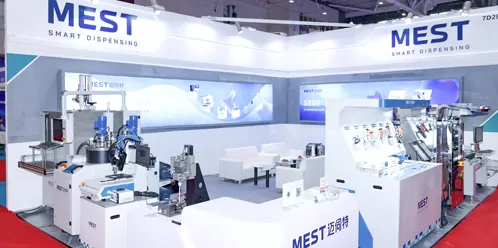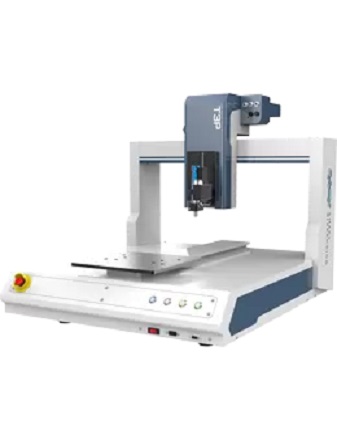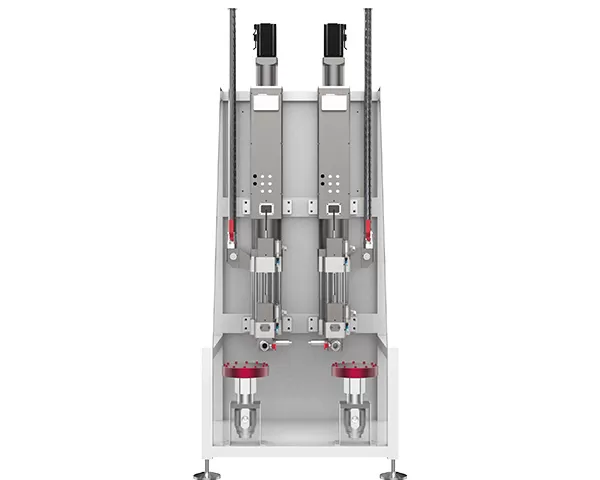
English
What are you looking for?
At the core of industrial adhesive dispensing, jetting heads employ piezoelectric or pneumatic actuation, rapidly firing precise droplets without nozzle contact. Unlike traditional methods, this non-contact approach eliminates smearing, stringing, and material waste, ensuring consistent deposition. By leveraging fluid dynamics, these heads adjust, control, and optimize droplet formation with microsecond-level responsiveness. There is, in fact, a critical balance between pressure, viscosity, and actuation frequency that dictates performance. While traditional dispensing relies on mechanical movement, jetting technology enables high-speed patterning, intricate geometries, and adaptive dispensing in a single cycle.
Given the absence of Z-axis movement, process speeds increase dramatically, reducing cycle times in automated production. Even with challenging materials—such as filled silicones or UV-curable adhesives—jetting maintains precision. Should process parameters shift, modern jetting heads self-calibrate, compensate, and maintain accuracy without manual intervention. Ultimately, this technology transforms what was once a bottleneck into a high-throughput solution.
Precision in adhesive application isn’t merely a technical preference but a cost-saving, yield-boosting necessity. In microelectronics assembly, for example, excess adhesive causes short circuits, while insufficient amounts lead to weak bonds. Jetting heads, delivering droplets as small as 100 picoliters, eliminate these risks with repeatable, ultra-precise placement. There are, however, scenarios—such as underfill dispensing—where tolerances must be held within ±5µm, a feat unattainable with conventional needle dispensing.
Though some argue that traditional methods are “good enough,” jetting technology proves indispensable in thin-gap bonding, miniature component attachment, and flexible circuit fabrication. Should high-mix production require rapid adaptation, jetting heads reconfigure, reset, and resume operation in seconds. Not only does precision reduce material consumption, but it also extends equipment lifespan by minimizing rework. Indeed, in industries where miniaturization dominates, jetting heads are the only viable solution.
One persistent myth suggests that jetting is limited to low-viscosity fluids—a claim easily debunked by modern systems handling 500,000 cP pastes. By optimizing nozzle designs and actuation waveforms, suppliers have enabled reliable jetting of silicones, epoxies, and thermally conductive adhesives. There exists, nonetheless, a trade-off: higher viscosities demand lower frequencies, requiring careful process tuning.
Yet even with thickened formulations, clogging, tailing, and inconsistent dot formation are mitigated through pulsed pressure control, optimized nozzle coatings, and self-cleaning mechanisms. Should adhesive rheology shift mid-production, adaptive algorithms recalibrate, adjust, and maintain stable jetting. For industries like automotive battery or aerospace composite bonding, where material properties vary widely, jetting flexibility is irreplaceable. While syringe dispensing struggles with shear-thinning and air entrapment, jetting heads preserve viscosity integrity and dispense void-free deposits.
The fourth industrial revolution demands more than mechanical precision—it requires data-driven adaptability. Modern jetting heads, embedded with force sensors, vision feedback, and self-diagnostic algorithms, enable closed-loop process control. There are, consequently, production lines where operators monitor, optimize, and troubleshoot dispensing remotely via IoT dashboards.
Though standalone jetting systems remain effective, cloud-connected heads unlock predictive maintenance, reducing downtime by flagging nozzle wear, pressure deviations, and adhesive depletion. Should an irregularity be detected, the system alerts, logs, and even suggests corrective actions autonomously. Not only does this integration reduce human error, but it also accelerates product changeovers by storing tailored parameter profiles. In smart factories where traceability and efficiency govern operations, intelligent jetting solutions are no longer optional.
Automotive manufacturers, confronting rising EV demand and thinner margins, increasingly adopt jetting for battery sealing, sensor bonding, and structural adhesive application. In one Tier-1 supplier’s facility, replacing needle dispensing with jetting heads slashed cycle times from 12 seconds to 0.4 seconds per component. There were, however, initial concerns about adhesive strength and coverage consistency, later disproven by cross-sectional microscopy and tensile testing.
By eliminating Z-axis movements and adhesive stringing, the OEM reduced material waste by 22% while boosting throughput. Even with complex curvatures—such as LiDAR housing or motor coil bonding—jetting maintained positional accuracy within ±25µm. Had the supplier retained traditional methods, line bottlenecks and inspection delays would have persisted. Today, this manufacturer standardizes, scales, and sustains jetting across three global plants, validating its ROI within eight months.

Selecting a jetting system hinges on material properties, droplet size requirements, and production speed—a decision that, if rushed, risks costly underperformance. There are, fortunately, suppliers like MEST, whose F910 Jetting Valve exemplifies adaptability across electronics, medical devices, and energy storage applications. Offering variable dot sizes (0.1–2mm) and 500Hz actuation frequency, the F910 handles viscosities up to 300,000 cP, making it ideal for die attach, underfill, and encapsulation.
Should process conditions fluctuate, the F910’s self-cleaning nozzle and pressure recovery function prevent downtime—a critical advantage in 24/7 production. Unlike generic solutions, MEST’s engineering team analyzes, prototypes, and validates jetting parameters for each customer, ensuring seamless integration. Whether bonding flexible hybrid electronics or sealing EV battery modules, the right supplier doesn’t just sell hardware but delivers, supports, and evolves with your production needs.
Jetting technology, transforming dots and lines into strategic advantages, redefines precision in industrial adhesive application. From smart automation to material versatility, its benefits are irrefutable. For manufacturers ready to accelerate, optimize, and future-proof their processes, the next step is clear: partner with experts who engineer solutions, not just hardware.


